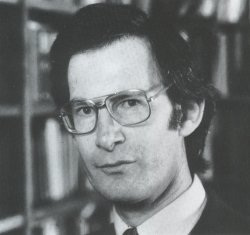Not much time for ripping CDs tonight (still catching up from the other night actually), so I am throwing onto the computer a couple of collections I have purchased over the past year. They are two (that’s right, two) COMPLETE sets of the organ work of Buxtehude. Why two? A couple reasons… first, they are both played quite well (Rene Saorgin and Ulrik Spang-Hanssen are the two players) and one of the fun things about organ music is how different performances can be just based on tone color. Organists often prepare pieces with their own choices for stops, and one thing I like to do is hear the same piece played by two different players to see what they do with it. And if that isn’t geeky enough, I also like to hear what different organs sound like. More then just about any other instrument, the organ can be likened to modern day astronomy. When you look at stars, you are seeing what they looked like in the past, and with organs, you get one of the few instruments that really holds their original quality. You can get a sense of how different areas used different tuning systems, and you also get an instrument that, more then any other, needs an entire building as its resonating body. So there can be big differences between performances and recordings.
Of course, some of the same things can be said about just about any recording of classical music. And if you start to throw in jazz standards, live rock recordings and covers, it really can be said about all music. Music can and should be performed by many people many times. It was always a little disheartening to me when people would come in and ask for ‘the best recording of blah blah blah’. There is no best recording, but here… take five recordings and see if you can figure out what it is about a piece that makes it what it is. It’s hard in some ways, but very fun as well. I completely understand the want for the best recording of something though, especially if you are just starting to explore a genre and want to get the best impression possible. Plus, the whole endeavor is expensive. I was very fortunate to be in a situation where I was given a large part of my collection, and the parts I did have to buy were discounted. But for the customer wanting just ‘the best’, I’m not really sure if such things exist. What I do know is that whatever recording you hear first, for the most part that is how you will learn most of a piece, and you will judge all other recordings and performances based on those impressions (so in some ways get any version, and for the time being you will think it is the best version of the piece around).
Now – getting a group of people together who do know a work and multiple versions of it is lots of fun… there is argument and agreement, and the quibbling over details small and large. And these kinds of conversations really made up usually about a quarter of any given shift working in the classical room at Tower in Berkeley (where there were usually a few customers who came in for an hour here and there throughout the week). They were a blast. And I learned a lot about music this way. I learned a lot about what people listen for, and in turn what I could or should listen for. It was some of the best ear training I had while earning my music degree, and it certainly shaped how I think as a composer.
If you have been reading my entries here and there, the idea of two complete Buxtehude sets probably isn’t really that far-fetched. Especially considering that I also ripped my third (of five I think?) set of Beethoven symphonies as well (the John Eliot Gardiner set) and Anner Bylsma’s second set of Bach cello suites (on Sony). I think I have six versions of the cello suites – and on top of that, I know at least two of those are by Anner Bylsma! It fun to hear the differences between the two Bylsma sets (surprising even!) but if you are familiar with Beethoven’s symphonies and haven’t heard Gardiner’s recordings, I really recommend you grab at least one of them to listen to. The fifth will sound like a new piece to you, but if I had to choose one, I’d say give the third a listen. The playing is extremely precise (a little cold even in parts), but the tempos (very strictly the ones Beethoven marked down later in life) and the use of period instruments make these sound quite different then the large, romantic orchestral performances that were the norm of the 40s and 50s. In other words, this isn’t your grandfather’s Klemperer or Furtwangler. And while in some ways, these period instrument recordings would seem to owe quite a bit to the early 19th century, they are also the product of musicians who have probably seen more then their share of modern scores. Dynamic range seems a bit exaggerated at times, but it works very well with this music. In some ways, it took a group playing instruments that are two hundred years old to make Beethoven sound new again, and overall the results are great fun. I just wouldn’t recommend them to someone as the first set of symphonies to hear.



